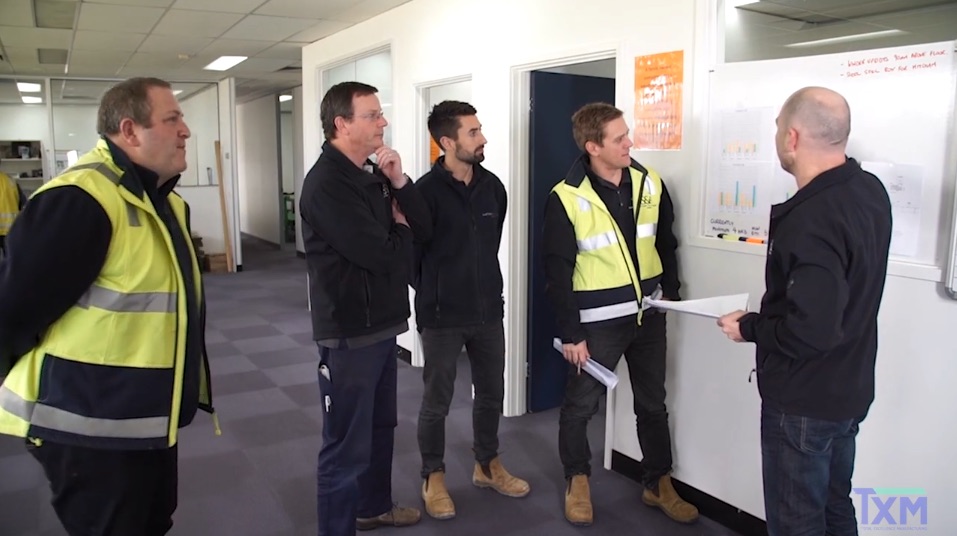How to Overcome the Reluctance When Implementing Lean Systems
Implementing Lean Systems when a company is faced with a challenge like an economic crisis can cause push back from your employees. This is how Lean Thinking concepts are introduced into a company; to overcome the current challenge, to transition away from old habits to new ways of thinking, which can create a wall of reluctance within your work teams if not done correctly when faced with this type of situation.
When this happens, the team is not only managing how to deal with new methods, procedures, metrics and terms such Kanban, Takt and Level Production. Each team member has also to understand their own level of emotional unease and thoughts towards trying out new ideas. Implementing lean systems effects the traditional way of doing business when these are reviewed, modified or even abandoned. This realisation may generate levels of fear and develops a degree of resentment with employees.
Implementing Lean with team leaders in a non-Lean company can be a double challenge. The company may have limited resources and procedures to support existing team leaders transition to lean systems. Secondly, with any change process, unhappy employees can unintentionally block new processes depending on how large the wall of reluctance has developed.
How can we overcome reluctance to change, develop quick wins and to progress in a timely way?
Here are three strategies for improving the reluctant teams during Lean Implementation.
1. Consideration of Initial Viewpoints

The existing perceptions with Lean systems may be many, including new words, change in responsibilities, bad past experiences or having an extreme viewpoint that Lean systems lead to layoffs. Also within companies, some employees are not open to working together due to the existing company culture, and it is difficult to start fitting into a Lean culture. They may not agree with Lean philosophies, nor do they want to work together on improvements.
If this the case then it is important to respectfully consider these viewpoints and work together, often one-on-one,to overcome their views, and get some level of participation in the initial trials to prove quick wins that they can see. Other options may be needed such as to transfer out of their positions or in extreme cases elevate situation to the senior management to assist in breaking down the opposite views
While this is given the utmost consideration, many managers and business owners know of these employees and their ability to change roles and responsibilities. In these cases, understanding these considerations up-front is important in planning healthy transitions that will bring everyone into a Lean culture of continuous improvement.
2. Understand How We Are Communicating
In general, all forms of communication are needed when introducing the whys, hows and expectations for a lean change. After your initial “all hands” announcement, start meeting with as many groups as possible. Make use of Face to Face communication session. These can be an effective way for a leader of change to convey positive messages.
Having a key location for all information to be displayed is also critical in keeping an open channel of communication. A great example of this are such visual information boards.
Do not forget to make good use of informal interaction such as lunchrooms, company functions like a BBQ, work area notice boards and walking around to make the conversation genuine and use the time to dispel negative rumours.
There can never be too much communication when creating change in workplace, so please invest time to bring everyone along with you.
3. Introducing Greater Individual Responsibility

In a non-Lean workplace, employees are not ready to evaluate their own actions, performance and do not offer improvement suggestions. Team member will find the concept of increased responsibility extremely daunting in the first place, rather than understanding the benefits of empowerment, at first glance.
Sometimes we find those that are a little more interested in creating change are the ones to invested in with further training and teaching Lean thinking skills. In turn, they are encouraged to share their learning and results with others across the company. When these individuals start to stand out and take actions to improve wasteful activities, leading to a quick-win and public recognition, good results with the business will show.
As Lean is implemented over time, team members will come to recognise themselves as part of a greater whole that not only focuses on improving the business but also the individual as they learn to communicate and act in a lean thinking company.
You will know that you have succeeded once employees at all levels are behaving as effective leaders, taking great pride in the entire production process, are in context with the production area and are continuously working to improve it.
I hope these three points help you improve your Lean Implementation programme. If you need any help, please contact any of the global TXM offices in your area.




